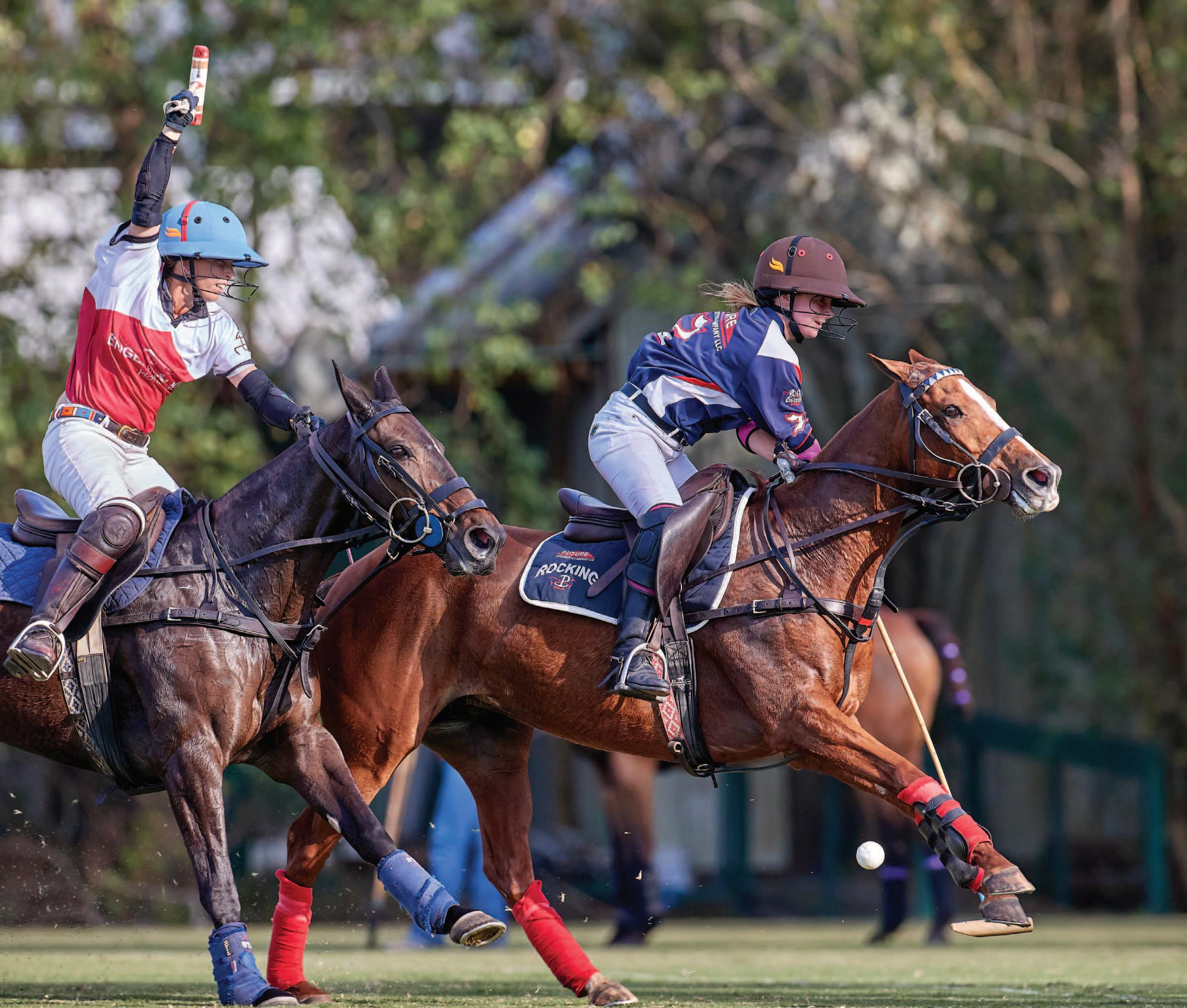INSTRUCTORS FORUM
Operator error Common mistakes and how to correct them By Erik Wright
In my 25-year career as a polo instructor and coach, my focus has been on clients who are new to polo and will be playing amateur polo from never having ridden to intermediate-level polo. From the first lesson, my teaching strategy aims to identify and avoid mistakes common among amateur players and shorten the learning curve toward consistent and sustained improvement. In this article, I want to show how recognizing and correcting these mistakes is a shortcut to improving your game. The No. 1 thing players can do to improve their polo almost instantly is to use two hands on the reins. Most errors in individual player skills require a great deal of time and effort to correct. Using two hands on the reins is one of the few exceptions to this rule and provide one of the rare moments of instant gratification to be found in the sport. Once it becomes habit, it will almost instantly double your ability to stop and turn, plus using two hands squares your body up in the center of the horse and dramatically improves your body position and balance in the process. Another very common mistake I see players make is playing too fast or outside their ability to stay in control. Consciously avoid playing faster than your ability to control. We all love speed and that is why a lot of people play, but you still have to stay within the framework of your own skill set. There is no point running to a ball faster than your ability to hit the ball, only to arrive at the ball and miss. We call that marking yourself, meaning, you are so obviously playing outside the realm of your ability, that it isn’t necessary to attempt to mark you. Don’t be that player. Understand there is an inverse relationship between speed and control so players must learn to stay within their own individual capabilities and the capabilities of the horse they are riding. A lot of players only have two speeds—full stop and full go. I call it levering. The lever is either at dead stop or pegged on full steam ahead. I like to think of riding your horse at speed more like driving a stick shift. You’ve got 10 gears. Play 90% of your polo in the sixth- or seventh-gear range. If we stay in sixth or seventh gear then we can maintain a nice balance 14 POLO P L A Y E R S E D I T I O N
between control and speed—fast enough to execute and keep up, but still under control. To be clear, I’m not advocating to just play slowly. What I am saying is that you have to put both yourself and your horse in a framework where you are in control and not exceed that framework. Make your plays correctly and under control, and then add speed as you are able to demonstrate consistent performance at each increasing level. There is no bigger cliché in the sport than watching a player run out of control to nowhere and accomplish nothing when they get there. Work hard not to be that player. Just by concentrating on using two hands and playing within your ability fixes about 75% of player mistakes. That said, here are a few more common errors that, if corrected, can dramatically improve your polo. Another common mistake amateur players make is attempting to dribble the ball too much. When it comes to my teaching programs, I emphasize back shots and full shots in low-goal polo and discourage excessive dribbling. Amateur players watch high-goal players dribbling without taking into account the decades of time and effort that enable the better players to execute short plays proficiently. Most amateur players aren’t able to execute a turn play effectively, and therefore the most likely result is that they are going to lose the ball and thereby lose possession for their team. As a coach, I have a very systematic, coordinated approach, preaching back shots and full shots in low-goal polo that lead to effective play. The back shot is a much quicker and simpler way to set up the rest of your team and turn from defense to offense. In lower- and intermediate-goal polo, when you turn the ball, you are most likely going to confuse the other players on your team, which leads to chaos, and results in poor play. If your team knows you are going to consistently play a back shot, it is truly remarkable how quickly they will turn for the back shot and win plays on a fast break. When you are on offense and dribble, the defense collapses on you quickly because you inevitably slow down to execute the dribble play. Now you are left trying to dribble through four pairs of legs versus













